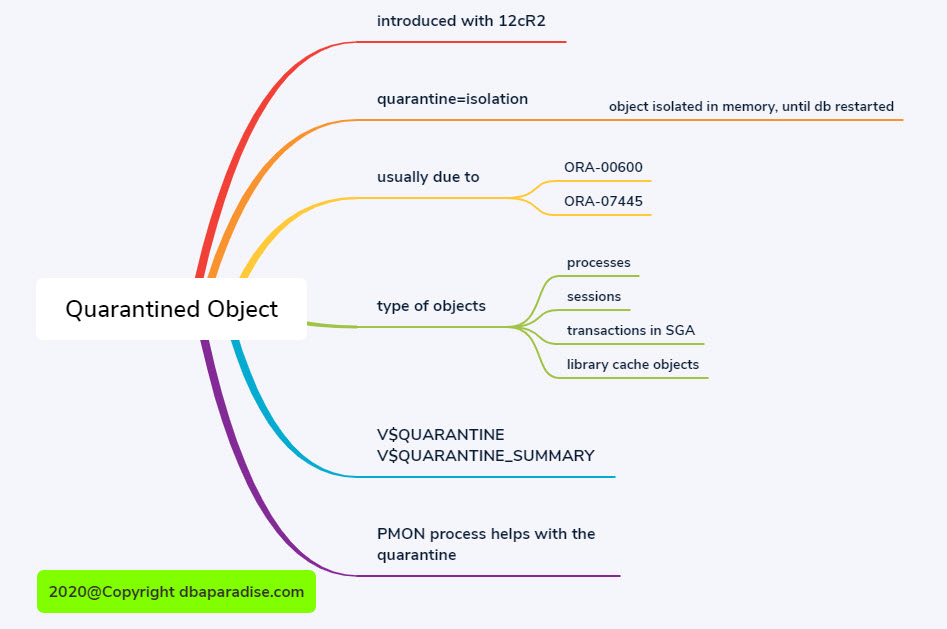
Everything You Need To Know About Quarantined Objects
Thanks for sticking with me on the 19c learning journey!
Quarantined Objects are not really new in 19c, as they were introduced in 12cR2. If you are not familiar with them, then this blog post is for you! I personally was not familiar with this feature.
So here it is today’s blog post, about Quarantined Objects, so you become familiar with them, and know what to do, when the time comes!
What is Object Quarantine?
What does quarantine mean anyway? Quarantine means isolation, so object quarantine means object isolation.
Object Quarantine usually occurs when ORA-00600 and ORA-07445 errors occur. When these errors occur, Object Quarantine isolates the object that caused the error, and then monitors it to see its impact on the system.
The object is isolated in memory, so it no longer affects the rest of the database.
What type of objects are we talking about here? One is for sure, these are not tables and indexes.
The objects that Oracle can quarantine are processes, sessions, transactions in the SGA and library cache objects.
These objects are in memory, and they are isolated in memory, therefore the quarantine remains in place until the database is restarted.
To get information about Quarantined Objects, you can query V$QUARANTINE and V$QUARANTINE_SUMMARY views, which will tell you the type of the object, the memory address of the object, the actual ORA- error, and the date and time of the error.
Can you guess which background process helps with the quarantine work? I’ll give you a hint: it is the PMON Group!

If you enjoyed this article, and would like to learn more about databases, please sign up to my weekly email, and you will receive The Ultimate 3 Step Guide To Find The Root Cause Of The Slow Running SQL!